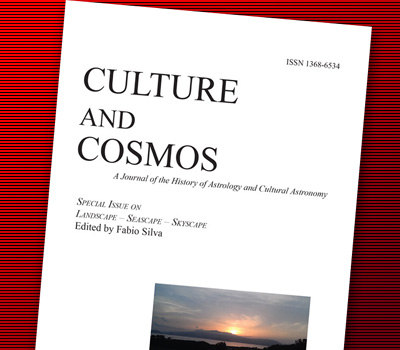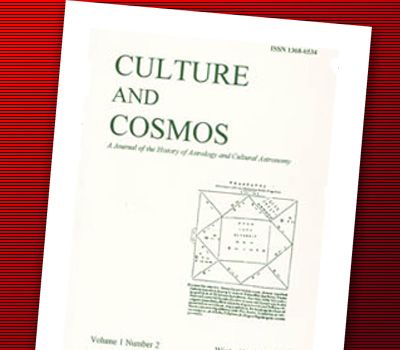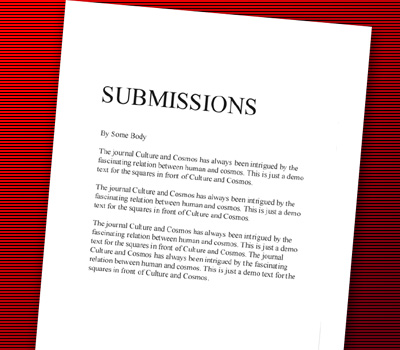We are currently seeking submissions for future volumes of Culture and Cosmos.
Volume 21
Orientations of Late Neolithic to Bronze Age and Iron Age Long Cairns in Coastal Finland
Marianna P. Ridderstad
Abstract
In this study, the orientations of c. 138 long cairns located in coastal Finland were measured and examined, along with other properties of the cairns. The length of the cairns varies from a few metres to almost 50 m. The dominant color of the stones in most of the cairns is red, and they were usually built on locally elevated terrain, e.g. on ridges, rocky outcrops or small islets on the ancient shore. It was found that in the category of long cairns there were several different types of elongated cairns: the 'simple' and curved long cairns, some of which were attached to round cairns; the rectangular cairns with one or more central chambers; the very large rectangular cairns; and two different types of ship-formed cairns, Type 1 and Type 2, the latter of which was a previously an unrecognised type of Late Neolithic/Early Bronze Age long cairn. The comparison of the orientations of the cairns of different types and locations suggest that there was some cultural continuity between the Neolithic and the Early Bronze Age cultures on the western coast of Finland. However, based on the present analysis, this continuity does not seem to have extended beyond the Middle Bronze Age. It is also suggested that the appearance of the Type 2 ship-formed cairn in the Ostrobothnia region in the Late Neolithic may have resulted from outside cultural influences, perhaps from the earliest contacts with the central ideologies of the Nordic Bronze Age.









